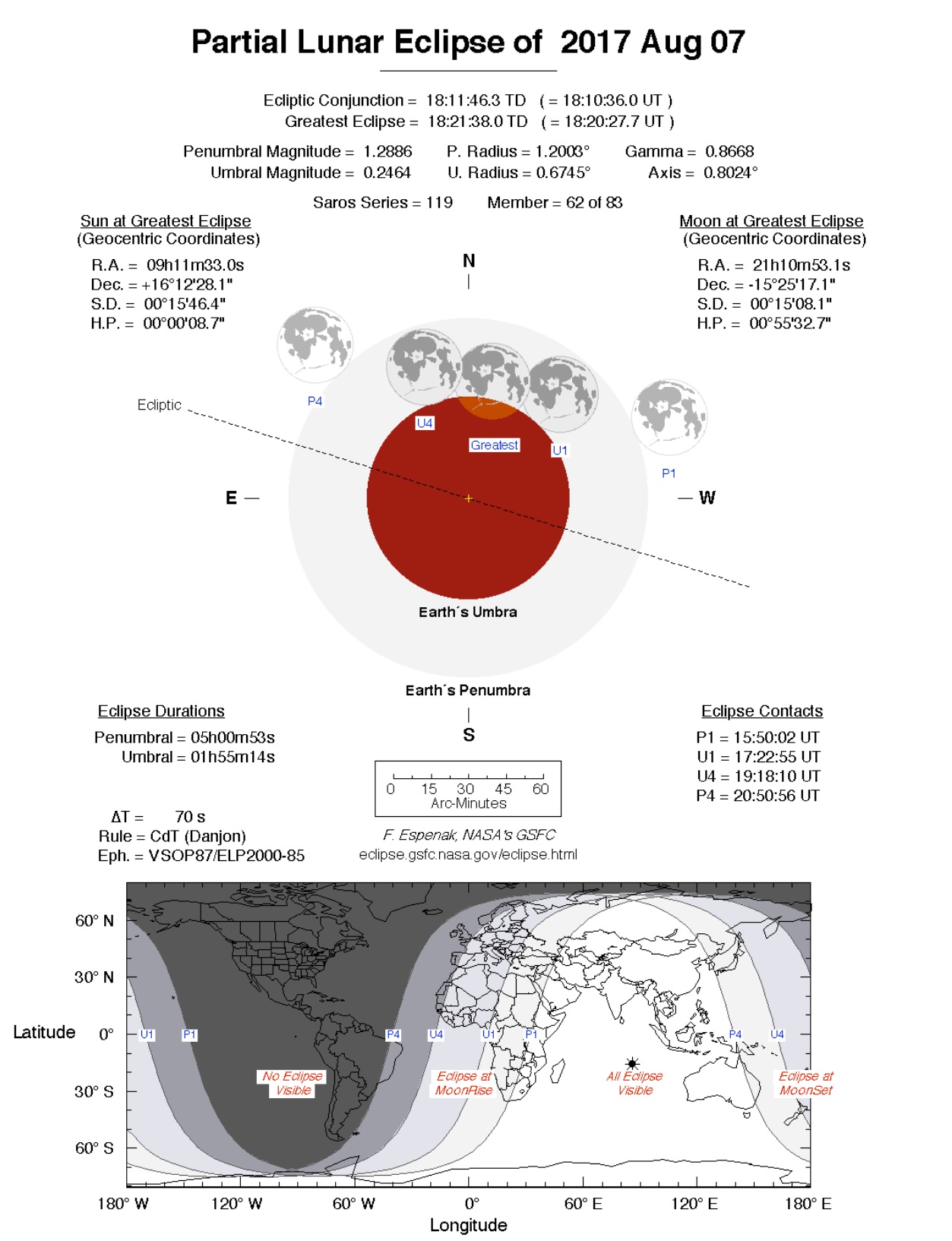Slooh to Webcast Partial Lunar Eclipse Today Ahead of 2017 Solar Eclipse
The moon will pass through part of Earth's shadow in a partial lunar eclipse today (Aug. 7) that will be visible from the Eastern Hemisphere, and you can watch it live online in two webcasts. The lunar eclipse comes exactly two weeks ahead of a total solar eclipse that will cross the continental United States on Aug. 21.
Although the partial lunar eclipse will be visible in person only in parts of Europe, Africa, Asia and Australia, people outside that region don't have to miss out: The astronomy broadcasting service eclipse Slooh will webcast the lunar eclipse live starting at 11:45 a.m. EDT (1545 GMT). The lunar eclipse is occuring during the August full moon, or the Full Sturgeon Moon.
The lunar eclipse will begin at 11:50 a.m. EDT (1550 GMT) and peak at 2:20 p.m. EDT (1820 GMT). Slooh's webcast will end at 3:20 p.m. EDT (1920 GMT). You can also watch the lunar eclipse on Space.com, courtesy of Slooh
In addition, the Virtual Telescope Project will offer views of the eclipse live as the moon rises over Rome's skyline; that webcast is accessible online here. The show is set to begin at 2:50 p.m. EDT (1850 GMT).
This lunar eclipse heralds the 2017 total solar eclipse, which will cross the continental United States on Aug. 21.
"Every total solar eclipse brings with it a lunar eclipse either two weeks before or after," Slooh astronomer Paul Cox said in a statement. "While it may not be as dramatic, it's a wonderful opportunity to build understanding of eclipses, in anticipation of the big one to follow."

Slooh's webcast will feature experts who will discuss the eclipse, and "live streams of the eclipse will come from Slooh's partner observatories in Africa, the Far East and Australia," the statement said. Plus, Slooh will take questions about the upcoming total solar eclipse via social media on Twitter @Slooh and on Facebook.
Get the Space.com Newsletter
Breaking space news, the latest updates on rocket launches, skywatching events and more!
Virtual Telescope will offer a second view of the eclipse, which is partly visible from Italy. As Virtual Telescope's Gianluca Masi wrote, " It is a precious 'appetizer' before the stunning total solar eclipse next 21 Aug."
Editor's note: Space.com has teamed up with Simulation Curriculum to offer this awesome Eclipse Safari app to help you enjoy your eclipse experience. The free app is available for Apple and Android, and you can view it on the web. If you take an amazing photo of the Aug. 21 solar eclipse, let us know! Send photos and comments to: spacephotos@space.com.
Join our Space Forums to keep talking space on the latest missions, night sky and more! And if you have a news tip, correction or comment, let us know at: community@space.com.

Sarah Lewin started writing for Space.com in June of 2015 as a Staff Writer and became Associate Editor in 2019 . Her work has been featured by Scientific American, IEEE Spectrum, Quanta Magazine, Wired, The Scientist, Science Friday and WGBH's Inside NOVA. Sarah has an MA from NYU's Science, Health and Environmental Reporting Program and an AB in mathematics from Brown University. When not writing, reading or thinking about space, Sarah enjoys musical theatre and mathematical papercraft. She is currently Assistant News Editor at Scientific American. You can follow her on Twitter @SarahExplains.









